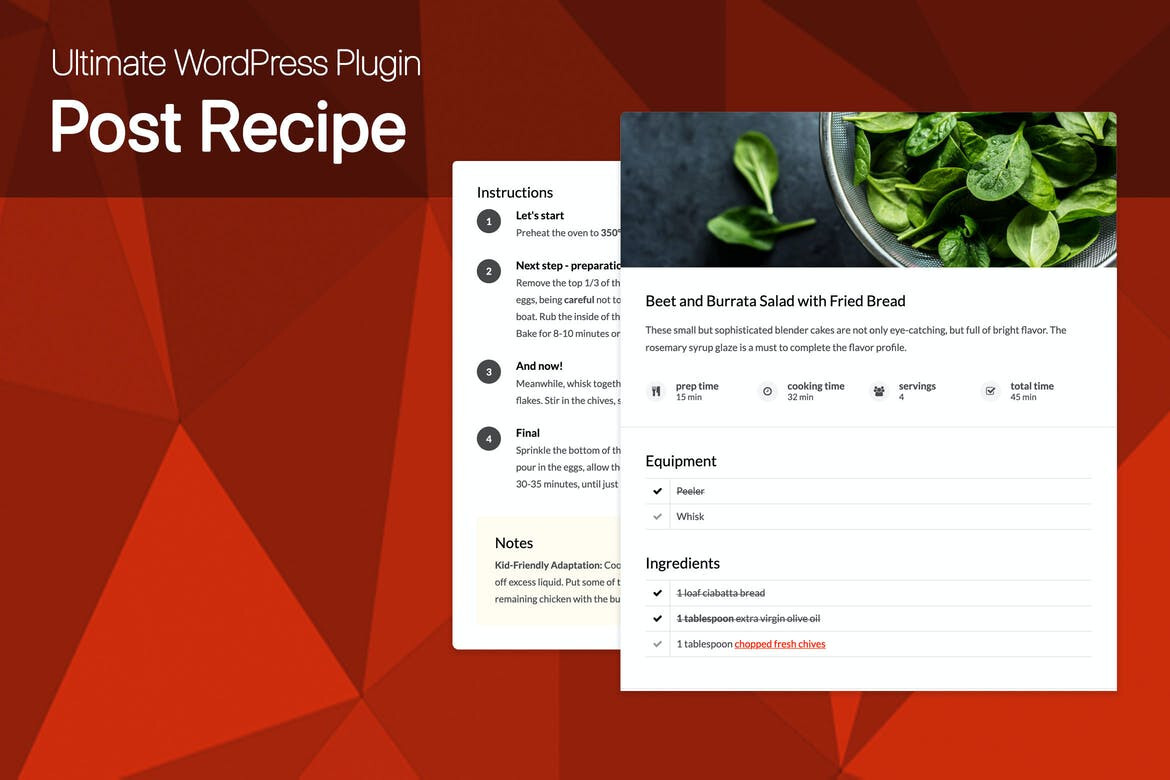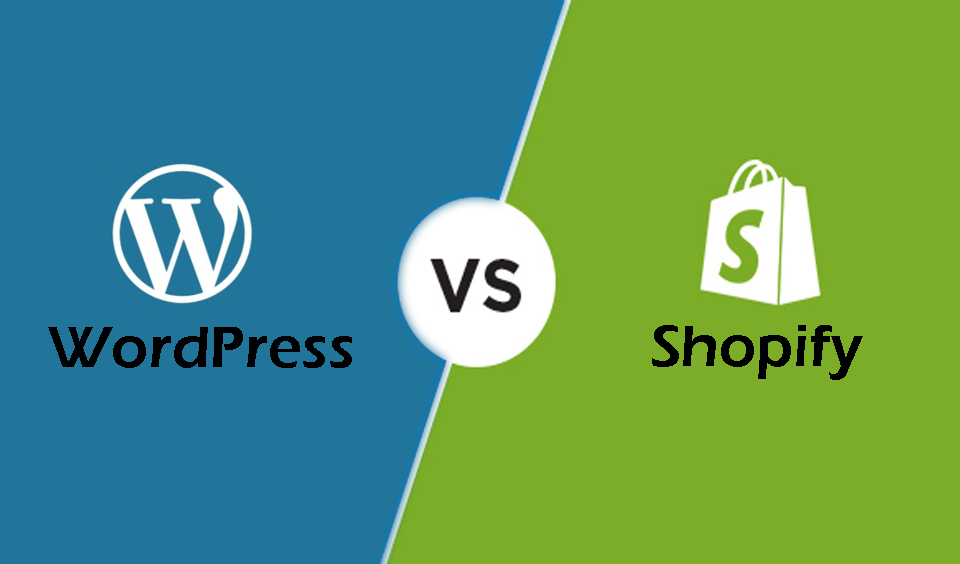Food blogging has been a popular niche for years and in 2019 will flourish more than ever, with many bloggers choosing very targeted niches. It’s no wonder we see an explosion in the food blogosphere - this is a popular hobby - and since people discovered niche blogging, it’s much easier to discover a market niche which is not oversaturated.
Let’s examine some examples of cooking niches:
- Keto / Atkins recipes
- Weight-loss recipes
- Plant-based recipes
- Gluten-free recipes
- Italian recipes
And so on - this list can go on. These niches then can break down to microniches, which are also very popular due to the fact that it’s much easier to compete this way.
An example of a micro niche blog is “Italian Pasta dishes” or “Vegan recipes with # of ingredients” - the famous food blogger Dana Shulz from Minimalist Baker has used exactly that concept and has been thriving for years.
if you are about to start your food blog, there are a couple of tools, that can be quite useful to you. One of them is the highly popular Google trends, which helps you see what topics are on the rise and where you can direct your efforts. You can also use a keyword suggestion tool (like Ubersuggest) or read a good guide, like this amazing piece from Stewart Walker, owner of the website Nichehack.
If you've found your niche already though and want to hear more on how to level up your game, read on.
Supercharge your site with the best plugins for WordPress food blogs
Whether you just created your recipe site or you’ve done some serious blogging already, enhancing your WordPress site will definitely be of great help. From ad widgets to subscription plugins, everything we’ll offer you in this article is designed to boost your business and help you make the most of it while offering a great user experience to your visitors.
One thing you should always keep in mind is while plugins can be extremely useful, it’s a good idea to not go crazy with them. The more plugins you install, the greater the possibility a conflict between them and also, a considerable number of plugins can also significantly slow down your website.
Important WordPress tip: remember to always create a back up before you do anything!
Making backups should go without saying anytime you make an update, install new plugins or make any kind of significant changes. In general, it’s a good idea to create regular backups due to the dangers of hacking, loss of files by mistake etc.
Check your hosting account - do they offer backup options? If your hosting provider offers a Cpanel, it will be rather easy for you to create a back-up, (you can also check our guide on ‘How to use Cpanel’) - simply locate the backup /Backup Wizard section and follow the instructions.
If you don’t have a Cpanel or find this a bit difficult, you can also use a plugin - there are great products like BackupBuddy (paid) and UpDraft (freemium), which are excellent solutions, but of course, you can always use a WordPress maintenance or WordPress support service like the one we offer, in which case an expert will take care of regularly backing up your site. Keep in mind that in case you completely lose access to your site (hacking or a fatal error) you won’t be able to restore your website via the plugins.
Recipe Plugins
Usually when you choose your theme and it's designed specifically for food blogging, there will already be some sort of recipe plugin that’s built-in. Foodie Pro and Foodica are to excellent and very popular examples of such themes (the latter has also a free version).
But if your theme doesn’t offer such an option, you can choose your own recipe plugin. One of the most popular ones is WP Ultimate recipes, which comes in both free and paid versions.

This plugin is absolutely fantastic, even if you don’t buy the premium version. It has very detailed options, including a breakdown of the time you will need to make the recipe, customizable fields for the ingredients and instructions step by step - all of this is designed in a very user-friendly manner, so all you have to do is fill the fields.
You have many options to segment your recipes - courses (e.g. side dish), cuisines (e.g. Italian) or keywords (e.g. plant-based). We love that they have Pinterest - rich pins already included, without requiring an additional plugin, as Pinterest is simply a gold mine for any respectable food blogger.
If you want the extras, you can buy the premium version, which will allow you to create your own recipe templates and offer cool things like shopping list generators and meal planners. The other cool thing is the automatic retrieval of nutritional information if you’re looking to add such a thing in your recipes.
All in all, you can start with the free version without feeling that you’re making a big compromise on the features.
The other very popular plugin is WP Recipe maker, of course, which is one of the first ones to ever be created. In terms of options, it’s pretty similar to the previous one, but with a slightly different layout of the recipe and the back-end (where you will actually create the recipe).

One cool feature distinguishing the premium version is the mobile-friendly kitchen timer, which can be rather cute, especially for amateur chefs.
The new kid on the block is Cooked, which is quickly gaining popularity among the ‘foodie bloggers’. We were quite impressed with the way this plugin is constructed - not only the tabbed display on the backend is very easy to use, but within the free version, it already includes things like Nutritional information and steps with images.
The premium version includes many great features, like Social sharing (without additional plugin) and recipe submission, so it’s definitely worth checking if you are planning to invest seriously in your blog.
Social Sharing Plugins
You work hard on testing recipes, you create beautiful photos, you film cooking videos - let the world see them! That is crucial for any blog (we strongly advise some research on content distribution), so make things as easy as possible for your readers - install sharing options.
As we mentioned, Pinterest is one of the best social networks for recipes. This is a pretty amazing guide on how to use Pinterest for food blogging, even though it was created a couple of years ago, so make sure to check it out.
As for your WordPress site, if you’re looking for a simple ‘Pin it’ option, just get the ‘Pinterest Pin it’ button. Should you be looking for a more detailed and in-depth alternative, you can install the Accesspress Pinterest plugin, which allows you to display some of your boards via widgets, have a Pin feed etc.
Looking for a more complete tool that will allow you to select the channels which your users can share on? You can use one of the many plugins specifically designed for sharing, such as Social Warfare, Sassy Social Share (very cool range of social icons), AddToAny (old and reliable) etc.
One distinguishable option is the Swifty bar, which has a unique approach when it offers a sticky bar at the bottom of your page, which includes not only sharing options, but also information about the author, category and time to read.
Conversion Plugins
If you’re monetizing your site through sales and not just ads, plugins that help your conversion rates are quite useful. They either collect contacts in some way (and therefore convert visitors into leads for example), or they offer attractive CTA (Call-to-actions) which will push users to perform a certain action, (say, buy a recipe book by promoting a time-limited offer).
Optin monster is a great example of such plugin - they have a wonderfully designed solution for email subscribers growth and sales conversion. You will get almost everything there; from popups to floating bars, A/B testing, and follow-up campaigns. The downside is that it’s only paid and the plans are billed annually, so it’s quite an investment.

A lighter (and free) solution is the Popup maker plugin which can be easily integrated with many other form/popup builders. This is more a mail list growth plugin, but it’s a good one and it can help you build a decent mail subscriber list when used properly, (and you definitely want to do that, considering email marketing is great for content distribution).
Another light and user-friendly option is Hello bar, which is ideal for collecting contacts, with a variety of display options.
We should mention one of the most versatile options out there - MailChimp which is a full marketing automation platform. Due to its incredibly large range of options, it deserves it’s very own article (which we’re planning to create soon). In the meantime, you can check it out, as it does offer easy integration with WordPress and WooCommerce, but keep in mind you will need to spend some serious time learning how to use this.
Image Optimisation Plugins
Considering food blogs are usually quite heavy in images, image optimization is a must. While the simplest option is to compress them by hand before uploading, when dealing with many images this can be quite a task. You can either use an ‘only service’ option like TinyPNG or directly install a plugin.
We already discussed some great options in our previous article on how to quickly enhance your WordPress page, but here are a few options - Optimole, ShortPixel and Imagify seem to offer the best compression in terms of balance between quality and size.
If you made it this far, you deserve our delicious bonus tip: create original content! This should be obvious after being said so many times, yet hundreds of blogs remain in oblivion simply because the content they release isn’t interesting enough to compete with already established blogs, with thousands and thousands of visitors on a daily basis.
Remember how we talked about niche blogging - make it your friend and put enough effort into creating things that will be actually useful to your target auditory. Be interesting, attractive and fun, and remember that people love authenticity, so don’t be afraid to explore your true passion.





